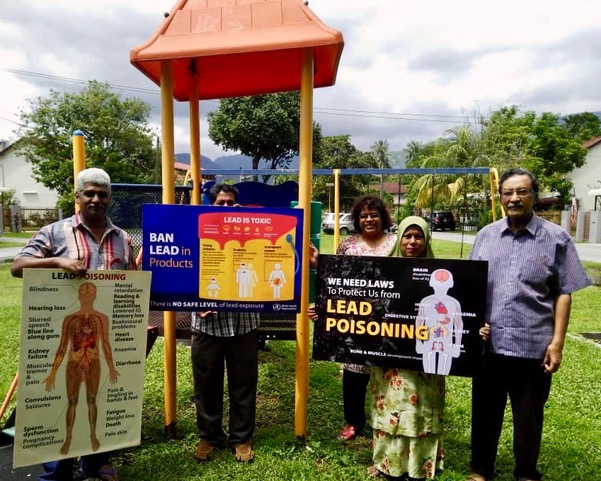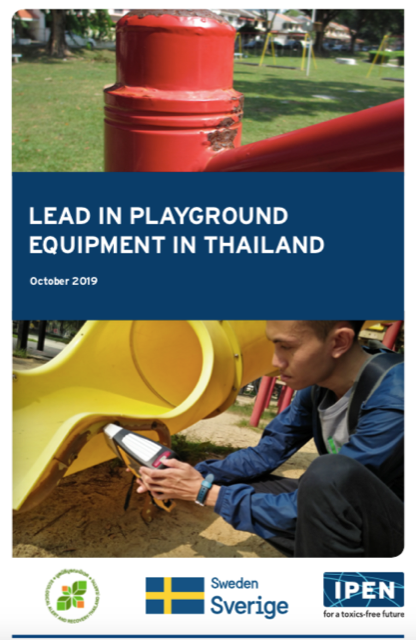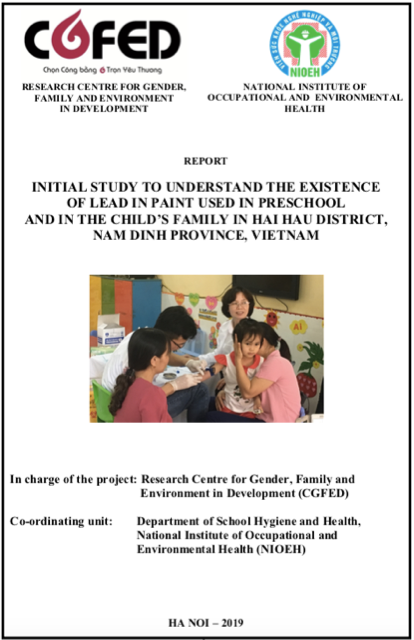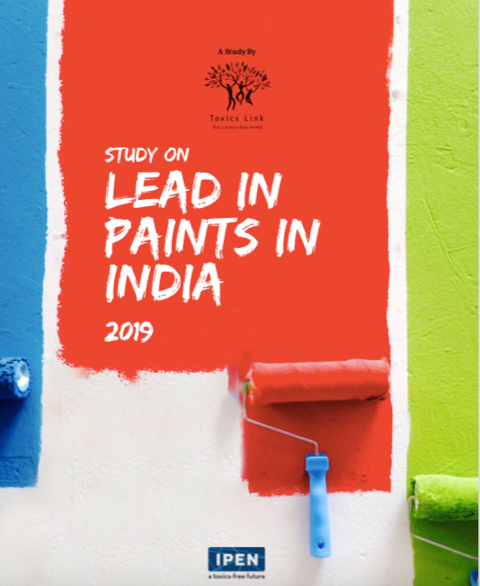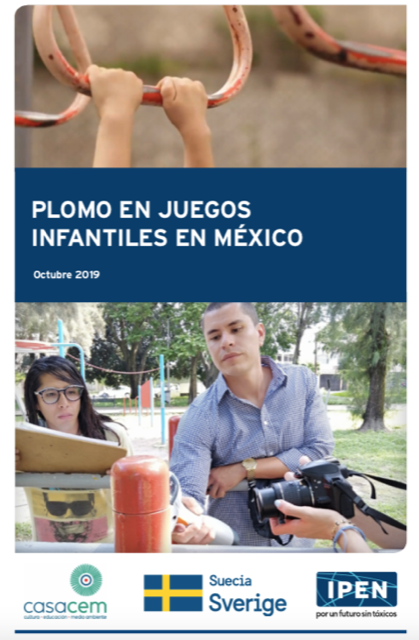The Global Alliance to Eliminate Lead Paint organized the 7th International Lead Poisoning Prevention Week from 20-26 October 2019. Through its multi-lingual resource pack, campaign videos, factual information and other materials, the Alliance aimed to support individuals, civil society organizations, industry and governments to work together to ban lead paint.
A total of 89 events were registered on the WHO website. The events were held by 81 organizations in 57 countries. NGOs organized the largest number of registered events, accounting for 66%, and government bodies organized 12% of events. Forty IPEN participating organizations from 36 countries participated in the Week of Action and organized various activities to raise awareness and promote actions, such as the adoption and enforcement of laws banning lead paint, to address the human health effects of lead exposure, especially for children.
A wide range of activities were carried out, including multi-stakeholder meetings to discuss developing laws on lead paint, media statements, public displays and dissemination of leaflets, publication of the results of market surveys of paint, events in schools and poster competitions. IPEN and NGO partners released a new study showing that the majority of 66 screened playgrounds in Indonesia, Malaysia, Mexico, the Philippines, and Thailand had equipment coated with paint containing total lead levels above 90 parts per million, and several items with levels above 100,000 ppm were detected.
Southeast and East Asia
Indonesia
Nexus3 Foundation screened play equipment and structures for lead content in 32 playgrounds (20 public and 12 private facilities) in Jakarta City and reported the results to the media during the Week of Action. According to the study, 82 out of 119 (69%) of the analyzed pieces of play equipment contained total lead concentrations above 90 parts per million. The highest lead level detected was 4,170 ppm on a yellow-colored slide and swing at a public playground.
Malaysia
The Consumers’ Association of Penang (CAP) organized a series of activities to publicize the findings of the group’s research on the lead content of playground equipment and other items used by children. CAP also launched a petition calling on the government to adopt a lead paint standard and regulation.
Philippines
The EcoWaste Coalition held an outdoor event to draw attention to the lead content of play equipment in public recreational facilities and the need to ensure a lead-safe play environment for all children. The group also co-organized an activity with the paint industry to announce and celebrate the third-party Lead Safe Paint® certification obtained by Sycwin Coating and Wires, Inc., a medium-sized paint manufacturer, for 590 decorative and industrial paints products under its 10 paint brands.
Philippines
The Interfacing Development Interventions for Sustainability (IDIS) notified the Davao City local government about the lead-painted playground equipment in three public parks. IDIS recommended the need to renovate and rehabilitate public parks to protect children from being exposed to lead in paint chips, dust, and soil.
South Korea
The Wonjin Institute for Occupational and Environmental Health (WIOEH) released a study on the lead content of solvent-based paints sold for home use in South Korea. WIOEH shared the report to some members of the National Assembly to amend the current standard on lead in paint and push for a stricter regulation banning the use of lead in paint. They also used the report to reach out to paint manufacturers and encourage reformulation of paints using alternatives to lead.
Thailand
The Ecological Alert and Recovery – Thailand (EARTH) observed the Week of Action by promoting materials on lead poisoning prevention on EARTH’s Thai and English websites and Facebook page. The group also publicized the results of a study on lead content of playground equipment in two public parks in Bangkok City which showed that 20 out of 24 (83%) analyzed pieces of playground equipment contained lead concentrations above 90 ppm. In addition, 14 of these play equipment (58%) contained dangerously high lead levels above 10,000 ppm. The highest lead concentration detected was 72,300 ppm in a red monkey bar in Benjakitti Park.
Vietnam
The Research Centre for Gender, Family and Environment in Development (CGFED) developed, printed and distributed copies of a policy brief describing the current status of lead paint in Vietnam and the effects of lead exposure on public health, especially on children, and disseminated related news articles through the social media. CGFED also used the opportunity to announce the results of a small-scale study showing the presence of lead in paint used in a preparatory school and a child’s home in Hai Hau district in Nam Dinh province.
South Asia
Bangladesh
The Association for Community Development (ACD) embarked on knowledge building for lead poisoning prevention through a district-level consultation targeting different stakeholders. The group also conducted a media advocacy to raise public awareness on lead poisoning and its impact on health.
Bangladesh
The Environment and Social Development Organization (ESDO) held a roundtable meeting with relevant stakeholders to underscore the need for a total ban on lead-containing paints by 2020 and effectively enforce the adopted standard for lead paint. The group also led a human chain in front of the Press Club to demand for a ban on lead in industrial paints by 2020.
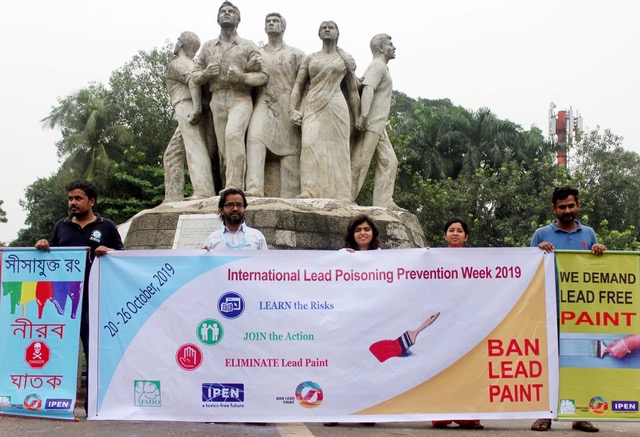
India
Toxics Link released a new report assessing compliance to India’s lead paint regulations by prominent paint makers other than the manufacturers of well-known national brands. Prior to this, the group conducted a paint brand survey in five states and procured 17 paints for total lead analysis. Results showed that all 17 analyzed paints (100%) contained lead levels above 90 ppm, 13 paints (76%) of which contained dangerously high lead levels above 10,000 ppm. The highest lead concentration detected was over 109,000 ppm from a golden yellow paint purchased in Rajasthan. In addition, three paints indicating “no added lead” and “less than 90 ppm” on its labels were found to contain lead levels ranging from 189 ppm to over 49,300 ppm.
Nepal
The Center for Public Health and Environmental Development (CEPHED) called for an effective implementation of Nepal’s mandatory lead paint standard of 90 ppm for all types of paints. A stakeholders’ program was held in Pokhara, and an interaction program with doctors and other healthcare professionals toward “Lead-Safe Kids” was held in Kathmandu. CEPHED also conducted a school-based awareness program and a public information drive through public service announcements on radio and TV.
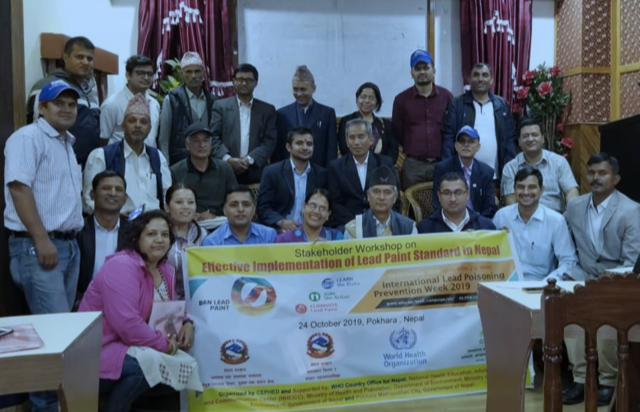
Sri Lanka
The Centre for Environmental Justice (CEJ) organized an art competition and award ceremony for school children to inform the young participants about lead poisoning issues. An outdoor fun game and quiz program was also held for both adults and children to share factual information about lead exposure risks in an entertaining manner.
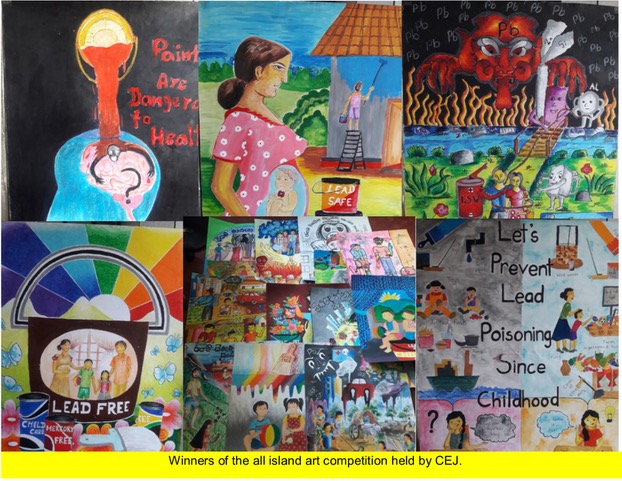
Middle East and North Africa
Iraq
The NGO, Together to Protect Human & the Environment Association (Together), organized an awareness raising workshop on the “Risks of Lead Poisoning on Human and the Environment” at Al-Mareef University College in Anbar, Iraq. Information materials including Together’s report on Lead in Solvent-Based Paints for Household Use in Iraq were distributed to participants. The event was attended by stakeholders from the government, academe, civil society, and the media.

Jordan
The Land and Human to Advocate Progress (LHAP) conducted a media awareness and lobbying campaign to urge the government of Jordan to fast track the adoption of a stricter national legislation—90 ppm lead limit for decorative architectural paints.
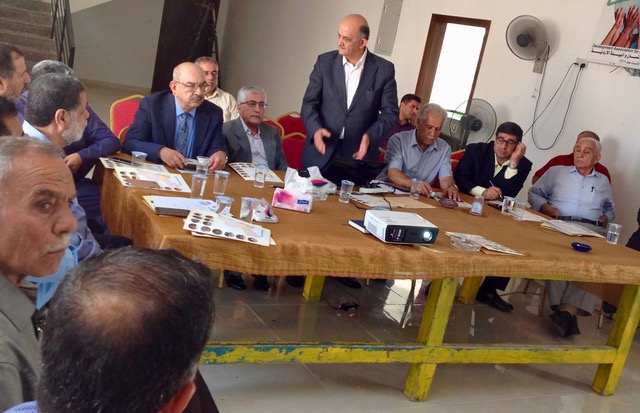
Lebanon
The Human Environmental Association for Development (HEAD) organized an awareness campaign in collaboration with Red Cross Lebanon explaining to household women and others about the problems with lead paint.
Lebanon
INNODEV-Lebanon held a public meeting to discuss the health risks and impacts of lead-containing paints produced, distributed and used in Lebanon and the urgent need for a national regulation for the protection of public health and the environment.
Morocco
The Association Marocaine Sante, Environnement et Toxicovigilance (AMSETox) sponsored a workshop to sensitize the participants about the sources and health effects of lead exposure, the problems with lead paint, and the need to regulate these paints in Morocco.
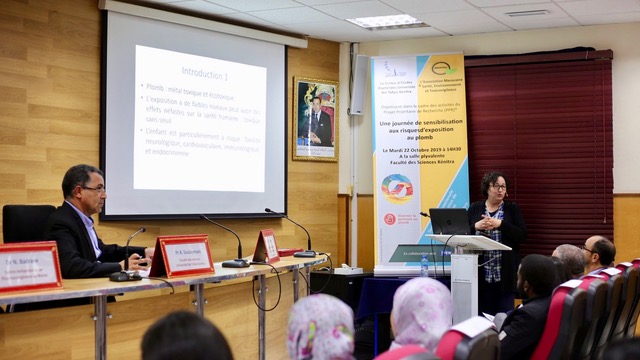
Tunisia
The Association de l'Education Environnementale pour les Futures Générations (AEEFG) advocated for a national law to eliminate lead paint in Tunisia. In addition to a media outreach, AEEFG supported a municipality in repainting a classroom with lead-safe paint.
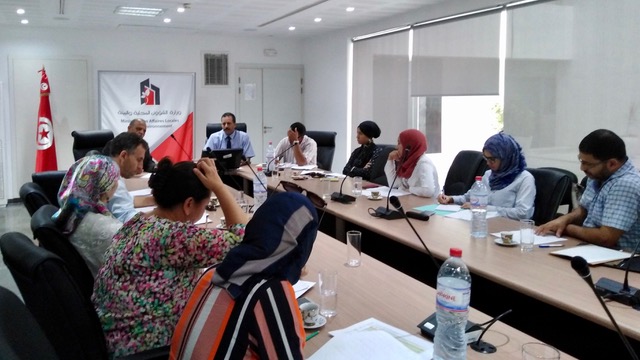
Anglophone Africa
The Gambia
The Young Volunteers for the Environment (YVE) organized a national stakeholder awareness forum on the hazards of lead paints and the elimination of such paints in The Gambia with diverse participants, including key government officials.
Nigeria
The Sustainable Research and Action for Environmental Development (SRADev-Nigeria) participated in the 2019 Coatings Show. The group organized a joint media event with the Paint Manufacturers Association of Nigeria (PMAN) and the Standards Organization of Nigeria (SON) to raise awareness on lead in paint among small- and medium-sized enterprises (SMEs) and to facilitate their access to lead-free raw materials.
Rwanda
The Association Rwandaise des Ecologistes (ARECO) conducted an outreach campaign to promote the phase-out of lead paint in Rwanda through meetings with various sectors. The group also distributed information materials to meeting participants
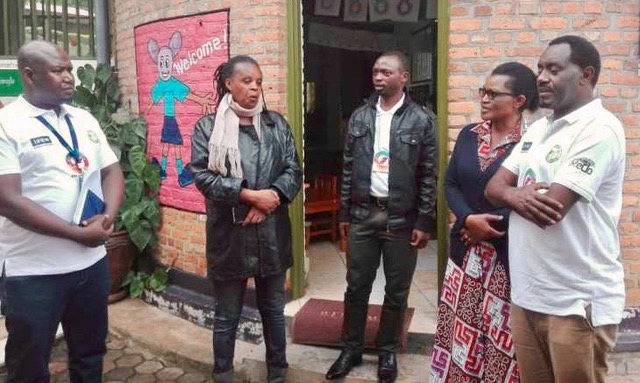
Tanzania
The Agenda for Environment and Responsible Development (AGENDA) engaged the media to shed light on the state of enforcement of Tanzania’s lead paint standard, while continuing to urge regulatory authorities to heighten public awareness about the health effects of lead exposure and the need to effectively enforce the lead paint standard.
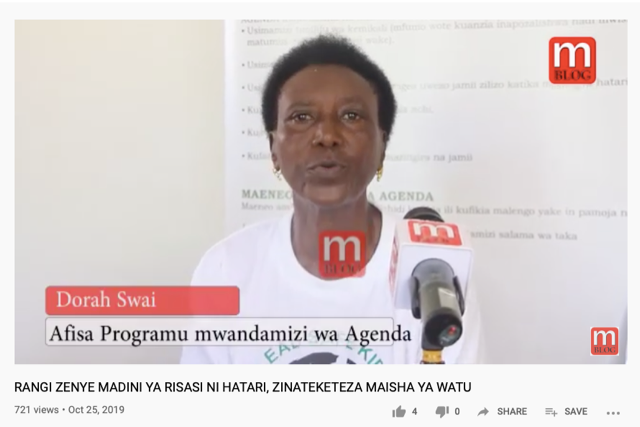
Uganda
The Uganda Network on Toxic-Free Malaria Control (UNETMAC) prepared lead poisoning reduction policy briefs that were distributed at a press conference attended by government officials and paint industry executives.
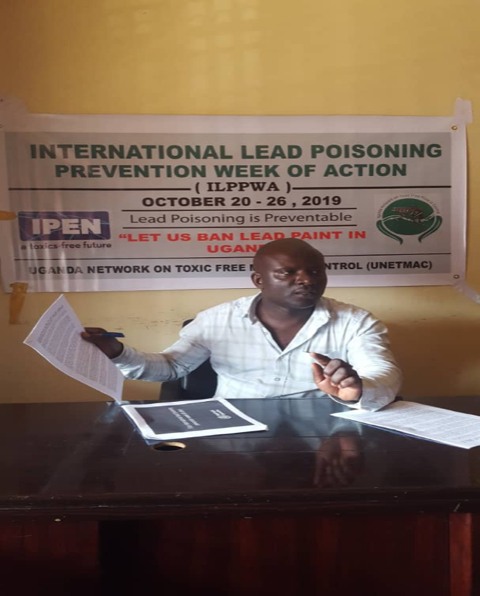
Uganda
The Western Media for Environment and Conservation (WEMECO) held a media conference during the Week of Action to highlight the dangers of lead as a public health concern in Uganda.
Zambia
The Children’s Environmental Health Foundation (CEHF) organized various activities to advance the elimination of lead paint in Zambia, including working with the government in convening a committee to draft the country’s lead paint law. On October 24th, CEHF participated in the celebration of Zambia’s Independence Day to raise awareness and support for concerted action versus lead paint.
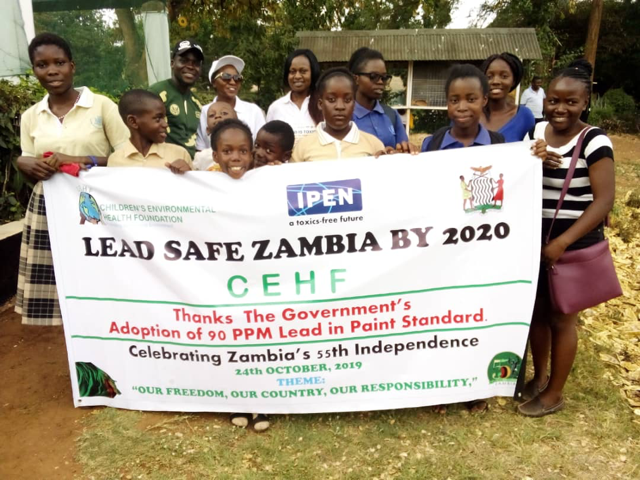
Francophone Africa
Benin
The Groupe d'Action pour la Promotion et la Protection de la Flore et la Faune (GAPROFFA) held a meeting with students at the University of Abomey-Calavi to raise their awareness about lead poisoning risks using the results of the study conducted by the group on the lead content of household paints in Benin.
Cameroon
The Centre de Recherche et d’Education pour le Développement (CREPD) used the Week of Action to reach out to decision and policy makers to build long-term national capacity to end lead poisoning in Cameroon beyond the existing regulation on lead paint.
Côte d’Ivoire
The Jeunes Volontaires pour l’Environnement (JVE-Côte d’Ivoire) held a workshop to discuss and define a strategy that will accelerate the adoption and implementation of a lead paint regulatory framework.

Togo
The Les Amis de la Terre-Togo (ADT-Togo) organized a meeting targeting senior officials from key ministries, as well as paint industry and media representatives, to discuss the regulation of lead paint in the country.
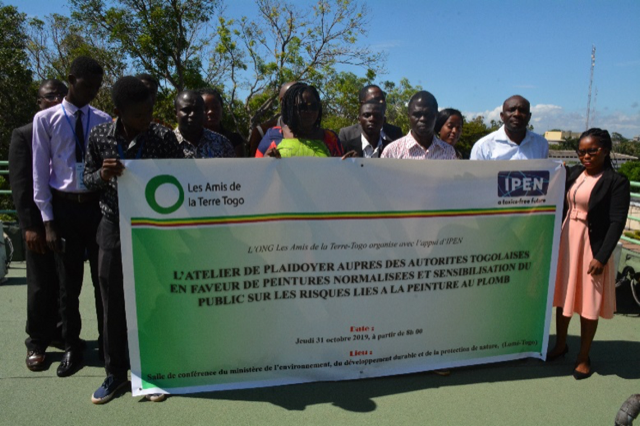
Eastern Europe, Caucasus and Central Asia
Armenia
The Armenian Women for Health and Healthy Environment (AWHHE) conducted an awareness raising campaign on lead in paints targeting local civil society organizations and retailers in the Ararat and Armavir provinces. A presentation in Armenian language highlighted the health and environmental risks of lead paint on children and women of child-bearing age and shared information about available alternatives to lead.
Azerbaijan
The Ecological Society “Ruzgar” organized an excursion for technical experts, NGO representatives and journalists to a paint manufacturing facility where technologies and materials for non-lead paint production was shared.
Kazakhstan
The Greenwomen Analytical Environmental Agency prepared a brief overview of the Technical Regulations on the “Safety Requirements for Paints, Varnishes and Solvents” of the Eurasian Economic Union and the Republic of Kazakhstan’s legislation aimed at regulating lead paint, as well as a comparative analysis of the actions taken by other countries.

Russia
Eco-Accord organized a multi-stakeholder roundtable to present scientific data on the dangerous impact of lead in paint on health, discuss loopholes in current legislation and the views from different groups to improve it, and enhance cooperation by all sectors to solve the problem effectively.
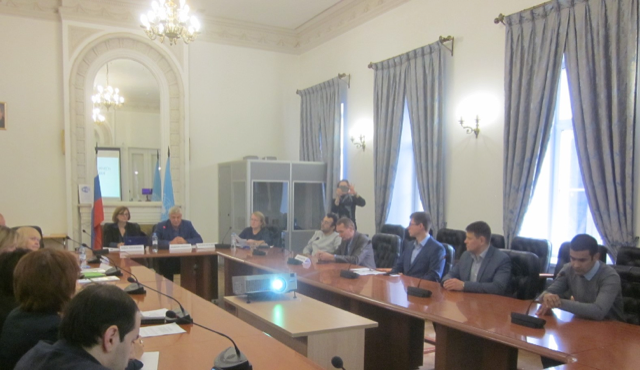
Tajikistan
The Foundation to Support Civil Society Initiatives (FSCI, Dastgiri Center) hosted a roundtable discussion about lead paint, the availability of lead-safe paint, and the process to regulate lead paint in Tajikistan. The group also interviewed key stakeholders about the possibility of developing a national legislation to control lead paint in the country.
Ukraine
The Chemical Safety Agency (CSA) marked the Week of Action by lobbying for the approval of the draft technical regulation on lead in paint and related materials. The group conducted public awareness campaigns, disseminated information materials, and participated in radio and TV programs to discuss chemical safety, including the negative impacts of lead on human health as well as other sources of lead exposure.

Central and Eastern Europe
Albania
The Eden Center gathered and shared information on lead paint in Albania, the existing legislation, and the future plans of the government to control and minimize the impact of lead paint on public health and the environment.
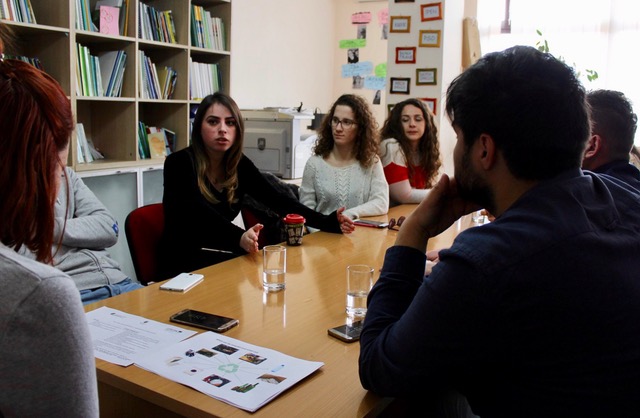
Latin America and the Caribbean
Argentina
The Taller Ecologista presented the results of a new study on the lead content of paints made and sold in the region. Information on occupation safety and health regulation in relation to lead in work environments, as well as the UNEP-recommended limit on the concentration of lead in paint was shared with meeting participants.
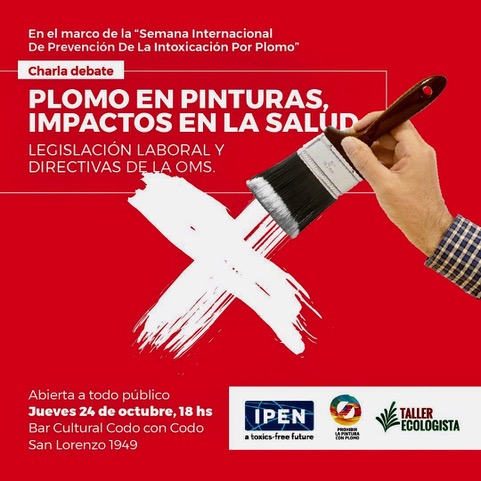
Colombia
Colnodo, in line with its mission to strengthen the quality of life of people through the strategic use of information and communication technologies, published the results of the questionnaire survey it conducted to know the extent of parental knowledge about lead poisoning and its prevention.
Jamaica
The Caribbean Poison Information Network (CARPIN) conducted activities around the theme, “Healthy children build a healthy nation: Say no to lead in paint.” CARPIN installed a booth display at the University of Technology, Jamaica Papine Campus, and hosted a public forum and panel discussion with key stakeholders.
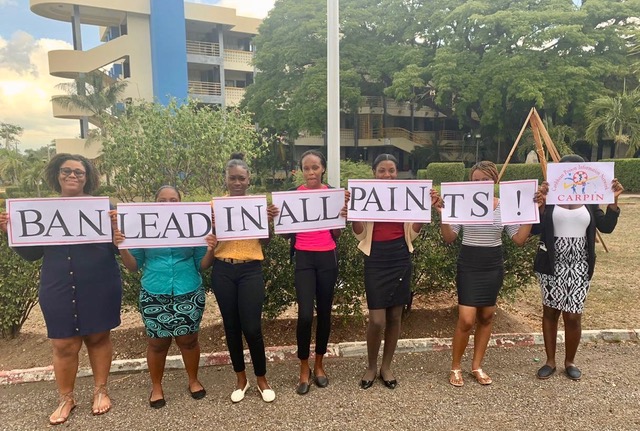
Mexico
Casa Cem published a study on the lead content of playground equipment in the cities of Zapopan and Guadalajara, Mexico. The study showed that 25 percent of sampled playground equipment contained lead levels above 100,000 ppm. The group presented the results of the study in a short documentary broadcasted live via online streaming.


